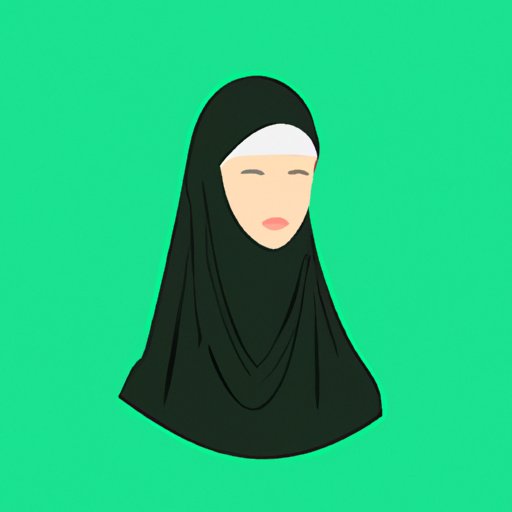Introduction
The hijab is a headscarf worn by Muslim women as an expression of their faith and modesty. Its meaning, however, goes beyond its physical appearance, with different interpretations and controversies based on cultural, political, and personal beliefs. In this article, we aim to explore the multiple dimensions of this Islamic garment, from its historical significance to its current role in different parts of the world.
From Style to Spirituality: The Many Meanings of Hijab
The word hijab literally means ‘curtain’ or ‘veil’ and refers to the concept of modesty and privacy in Islamic teachings. However, the interpretation and practice of hijab vary significantly across Muslim communities, ranging from a full-body covering to a simple headscarf. While some view hijab as a religious obligation that enhances their spirituality and moral character, others see it as a personal choice that reflects their cultural identity and fashion sense. Furthermore, hijab has been a source of empowerment and resistance for Muslim women in different historical and political contexts, challenging stereotypes and discrimination.
How to Wear a Hijab: A Step-by-Step Guide for Beginners
If you are new to hijab or want to experiment with different styles, there are many resources available online or in Muslim fashion stores. Firstly, you need to choose the type of hijab you want to wear, such as the rectangular scarf, the square scarf, or the shayla. Then, you need to learn how to wrap and secure the scarf around your head and neck, depending on the look you want to achieve. There are countless tutorials and videos on hijab styles, from the classic Turkish style to the modern hijabista style. Don’t be afraid to experiment and find your unique hijab style that suits your personality and occasion.
The Intersection of Politics and Hijab: How Hijab Became a Symbol of Resistance
Hijab has been a focal point of political debates and conflicts, both within and outside Muslim-majority countries. In some countries, such as Iran and Saudi Arabia, hijab is required by law and enforced by religious police. In others, such as France and Turkey, hijab is banned or restricted in some public places as a secular measure against religious symbolism. Nevertheless, many Muslim women have used hijab as a means of protest and empowerment, especially during the feminist and anti-colonial movements of the 20th century. Hijab became a visible expression of Muslim identity and pride, challenging the Orientalist stereotypes and patriarchal norms imposed by the West and the East.
Debates and Discussions: The Controversies Surrounding the Hijab
Hijab remains a controversial and divisive issue in many parts of the world, with debates and discussions on its meaning, symbolism, and legality. Some argue that hijab is a form of oppression and subjugation of women, as it reinforces the patriarchal values of modesty and seclusion. Others believe that hijab is a feminist choice and a religious right, as it allows women to control their bodies and minds in a male-dominated society. Moreover, some controversies are related to the intersectionality of hijab with other issues, such as Islamophobia, racism, and nationalism. Hijab-wearing Muslim women face discrimination and harassment in various settings, from schools to workplaces to airports.
Personal Stories: Why I Wear a Hijab
Despite the ongoing controversies and challenges, many Muslim women choose to wear hijab as a personal expression of their faith, identity, and dignity. Each woman’s story is unique and meaningful, reflecting her background, beliefs, and aspirations. Some women wear hijab as a spiritual practice that strengthens their connection to God and their community. Others wear hijab as a political statement that resists Islamophobia and colonialism. And still, others wear hijab as a fashion statement that reflects their creativity and beauty. Whatever the reason, hijab-wearing Muslim women deserve to be heard and respected, not judged or stereotyped.
Conclusion
The hijab is a multifaceted and dynamic phenomenon that deserves to be understood and appreciated in its complexity and diversity. It embodies not only the religious traditions of Islam but also the cultural expressions of Muslim communities around the world. It represents not only the modesty and privacy of Muslim women but also their agency and creativity. And it challenges not only the stereotypes and prejudices of non-Muslims but also the dogmas and prejudices of Muslims themselves. By learning and sharing more about hijab, we can create a more inclusive and respectful society for all.
